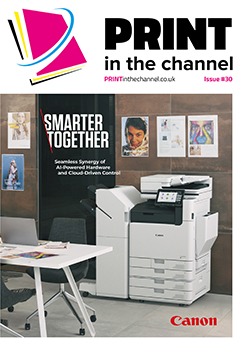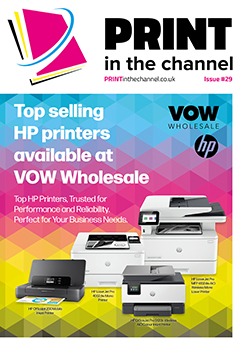How mobile scanners are keeping delivery vans moving in the face of exorbitant demand.
Now that social media giants like Meta and TikTok have launched e-commerce shops, the online shopping trend is almost certainly going to continue to grow, along with demands for ever-shorter delivery times.
According to Forbes, the global e-commerce market is expected to surpass $6 trillion this year, putting pressure on the warehousing team to become increasingly efficient in its operations to get orders out faster.
As a result, mobile barcode scanners are becoming an ever more appealing prospect to warehouse managers who need their staff to focus on picking products, according to David Craggs, growth product manager – EMEA at Newland ID.
“Mobile computers with integrated barcode readers have enhanced the warehouse industry by increasing accuracy, steam lining operations and boosting efficiency,” he says. “These devices have become an indispensable tool for warehouse management.
“The key advantage lies in their ability to expedite inventory management processes. By allowing real-time data captures and wireless transfers, mobile computers enable accurate and timely tracking of stock levels or precise picking fulfilment of customers’ orders, leading to a reduction in human error.”
This admin elimination is a common trend throughout businesses. As bosses look to get the most out of employees, the repetitive tasks can often be automated as, Stefan Spendrup, VP of sales, Northern and Western Europe at SOTI says.
“In an industry that revolves around being able to provide your service faster, more efficiently and at a lower cost than your competition, mobile technology means more than just barcode scanners in workers’ hands.
“It means automating and eliminating manual and paper-based processes that create bottlenecks and risks of inputting inaccurate information. These manual processes often lead to a loss of productivity that can be felt throughout business operation.”
Meeting expectations
While data capture and reducing paperwork will always be seen as a plus in this digital age, it may not always be the primary reason why these mobile scanners are so popular.
In fact, according to Carlos Villafane, country manager for UK, Ireland and Benelux at ProGlove, there are “several factors” that go into the purchasing decision.
“The choice of a barcode scanner depends on several factors, including the use case, application, user experience and ergonomics of the device,” he says. “Different scenarios may require different features and capabilities from a scanner.
“For example, in a manufacturing environment, a scanner may need a short range, while in a warehouse picking environment, a scanner may need a long battery life. Both scenarios may also benefit from a feedback option to confirm a successful scan, such as a beep or vibration.
“Some applications may have very specific requirements, such as scanning multiple barcodes at the same time.
“Ultimately, the scanner should deliver the desired business impact, such as improved productivity, efficiency, accuracy, error reduction and worker wellbeing.”
David agrees, while emphasising the importance of a good user experience. He says that “when it comes to customer preference, the choices made in selecting their mobile computers are based on a few factors.
“While a wide scanning range is crucial for handling items stored at different heights and depths, speed and accuracy are equally significant for swift and error-free scanning.
“Additionally, an intuitive and user-friendly interface is essential for seamless integration into existing warehouse systems. Android OS is the current lead in mobile computers but there are still many instances of Terminal Emulation and some legacy Windows devices.”
Providing the best experience
The experience that end users and businesses receive is now a huge focus within the technology industry. With competition ready to take customers away, and customers themselves possibly reluctant to part with their money, the right enterprise mobility management (EMM) solution can make all the difference.
“As with most hardware solutions, it is the software that can really make a difference,” says Carlos. “This is a factor that many companies are considering. After all, a barcode scanner captures most transactions on a shop floor.
“When you contextualise and refine that data, it can really tell the true story of your shop floor. This bottom-up view is a perfect complement to the top-down perspective provided by your traditional enterprise solutions such as warehouse management system or enterprise resource planning.”
Stefan adds that companies leverage mobile barcode scanners to help digitise processes that previously were done manually. “This digitisation allows employees to more efficiently and effectively do their jobs,” he says.
“However, any device downtime means downtime in business operations, preventing organisations from maximising ROI. If the IT team has insight into scanners in real time, they can proactively solve issues to prevent device downtime. Hence why it’s critical for businesses to use an EMM solution to gain intelligence data about its mobile fleet.
“Intelligence analytics like battery health cycle, visibility on apps that drain battery life and devices that need software updates to ensure they are kept secure will help organisations solve the toughest mobility challenges. If devices need to be sent back to headquarters to be fixed, this increases device downtime, which ultimately has a detrimental impact on a business’ bottom line.”
Making the sale
Now that the advantages are outlined, resellers can focus on making the case for a change and getting those sales over the line.
While the technology itself may be compelling enough, David says that training and support programs go a long way, with Carlos adding that understanding the customer is also a key component to making the sale.
“Resellers looking to enter the established market of warehouse solutions and hardware supply should look to select a vendor that stands out,” says David. “Sway away from market leaders and select a manufacturer that compares to market leaders technically but has a pricing and margin edge.
“It’s also important to establish a good relationship and support structure with the selected vendor and invest time in support and training programs.”
Carlos adds that what matters is the quality of the customer relationship. “The reseller needs to understand the customer’s needs and pain points and then come up with the right solution,” he says.
“But the beauty of our business is that resellers have the opportunity to deliver significant productivity and quality improvements to their customers. They can be seen as innovation enablers, which will certainly strengthen their ongoing business relationship. This will help them identify and create new revenue opportunities.
“Of course, we have a reseller program. The program includes dedicated support materials such as marketing assets, business case insights, campaign materials, technical product training videos and partner training.”
Future
As resellers look to take advantage of partner programs and build relationships of their own, they may like to know what’s coming around the corner in the sector.
Carlos says the current trend is towards using wearable devices to scan barcodes rather than a stand-alone device.
“More and more companies are finding that industrial wearables, such as barcode scanners that can be worn on the back of the hand, can offer significant advantages over traditional handheld scanners,” he says.
“According to our latest survey, 40% of larger warehouses are already using industrial wearables. Another 42% are certain to invest in industrial wearables within the next five years. That is probably because industrial wearables can provide hands-free scanning, which can increase speed and convenience for workers, as well as reduce the risk of dropping or losing the device.”
As with every other industry, artificial intelligence (AI) is at the forefront of people’s minds, specifically Stefan and David as they look to the future. David also highlights wearable technology as one to look out for too.
“The Nwear range by Newland of wearable watch mobile computers in combination with barcode scanners worn on the hand, are the torchbearers for the surge in innovative warehouse technologies,” he says.
“The industry should be braced for advanced features like augmented reality for hands-free picking, AI for predictive inventory management, and Internet of Things integration for real-time monitoring that is expected to transform warehouses into highly efficient hubs.”
Stefan adds: “AI and more specifically, automation will be a huge trend over the coming year. Critical to enabling greater automation is increased adoption of and reliance on devices. Recent SOTI research revealed that 36% of UK companies have seen substantial growth in the number of devices deployed, while 35% have seen an increase in the mix of device types.
“As the mix of devices continues to increase across organisations, including within warehouses (smartphones, barcode scanners, rugged handsets, printers, etc.), it means that more data is being collected, processed and stored than ever before, fostering a greater need for data management, security and compliance.”










